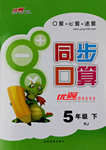题目内容
--How do Americans like to be called?
--Most of them don’t object _______ them by their first names.
- A.to call
- B.for calling
- C.to calling
- D.that I call
C
题干中object意为“反对”,是不及物动词,和介词to搭配后跟名词或动名词。此时要特别注意to,不要把它当成动词不定式符号。英语中这类短语有共同特点,如:pay attention to, look forward to, devote...to, lead to, be close to, get close to, in addition to, be opposed to, get used to, accustomed to, ...
题干中object意为“反对”,是不及物动词,和介词to搭配后跟名词或动名词。此时要特别注意to,不要把它当成动词不定式符号。英语中这类短语有共同特点,如:pay attention to, look forward to, devote...to, lead to, be close to, get close to, in addition to, be opposed to, get used to, accustomed to, ...

练习册系列答案
 优翼小帮手同步口算系列答案
优翼小帮手同步口算系列答案
相关题目